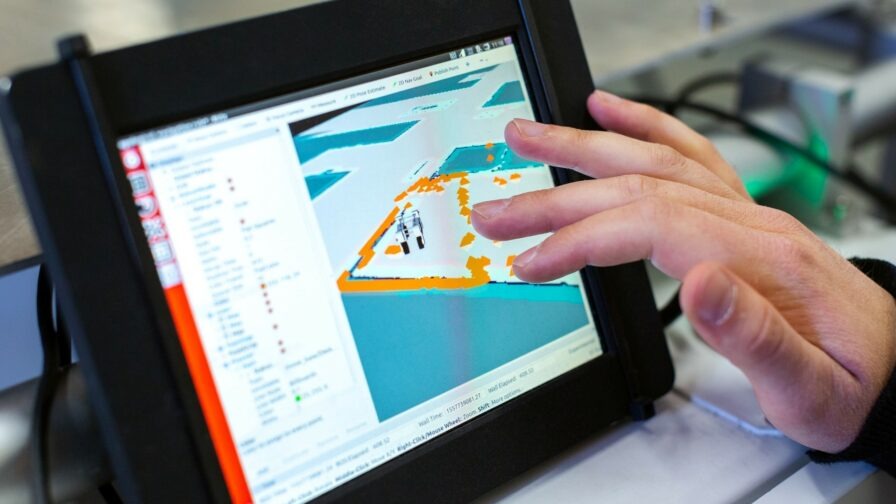
Whichever way you look, tech influences every aspect of our lives, and at the heart of this digitization is Artificial Intelligence (AI). With proper integration, AI systems can power many aspects of your business. An example is that, for a long time, businesses have asked ‘how do you create an app that pulls in customers?’ AI provides an answer, allowing us to give greater personalization and user experiences.
AI can also help internally, speeding up menial tasks and processes. Not only does this make your life easier, but it means you can put your energy into tasks that grow your brand.
What is Artificial Intelligence?
If you’re new to the business world or simply catching up with the times, you might be unfamiliar with AI. While you might lack familiarity, there’s a good chance you’ve seen AI in action. AI is everywhere, powering smart homes, transportation systems, search engines and is integrated into your VoIP setup. Whatever the task, AI can probably make it easier.
It seems that technology is only going to become more and more widespread. Forecasts say that the AI market will be worth $641.30 Billion by 2028. But how does it work? The technology uses algorithms (a set of instructions allowing software to complete tasks) to replicate human thought.
AI hasn’t always had the best reputation, largely thanks to pop culture. But while AI doesn’t (yet) have plans to take over the world, the technology can be used in many aspects of your business. This means automating processes, giving better insights into online shopping trends, and much more. Essentially, if you haven’t yet started working with AI, now is the time.
But introducing complex new systems to your workplace means there is potential for things to go wrong. You’ll need to conduct thorough testing if you want your systems to work well. Where is the best place to start?
This article will explain some essential elements you should consider when testing AI systems.
Know the Algorithms
At the start of all AI testing, ensure you have the facts straight. To know if your AI is working as it should be, you need to know how it works. As reflected earlier, all AI is powered by the use of algorithms. But not all algorithms are the same. Instead, each will deliver different instructions based on the system’s needs.
Which AI system are you using? Each system has its number of parameters that help it to make decisions. The algorithms used by your system will inform the kind of testing you need to conduct. So, testing should start by looking at your system. Familiarize yourself with its structure and how it should run.
Test Your Algorithm
To begin testing your algorithm, your approach first needs to be split into three parts. These are the training set, the development set, and the test set. Let’s look at each set.
The Training Set
For this set, data is input into the model, allowing it to spot patterns and learn the features of the data. This data is repeatedly input into the system, enabling continuous learning. Remember, your training set should contain a diverse set of inputs. it will give your model a better chance of recognizing different scenarios that crop up in data.
The Validation Set
This is a dataset that is separate from the previous example. This set is used to monitor performance as training is carried out. Throughout this process, you should gain valuable information that can improve the hyperparameters of your model. Essentially, this set is designed to tell us whether training is successful or not.
The Test Set
This set will be input once training is completed. This is designed to tell you how well your model is performing. By the end of this stage, you’ll be able to tell whether your model is heading in the right direction or if you need to go back to square one.
Make Sure You Have Enough Data
AI uses a system called machine learning. This allows it to create new approaches and adapt to changes without human input. It’s not hard to see why this system can be useful. Machine learning can aid us in many different aspects of business, these include
- Improving workflows
- Supporting the development of new products
- Creating product recommendations for users
But to work properly, machine learning needs a constant flow of data. Without the right amount of data, the output will be less accurate. You might find that AI is hindering, rather than helping, your business. To create datasets and test your system, you’ll need data of the right quality. If you’re not getting the results you need, the system might not have enough information.
But how can you ensure that the data flow remains constant and fresh? Firstly, you need to look at your data collection techniques. You’ll need the right software to gather data. There are many options available. Take time to research and consider some of these packages. Which best meets your needs? Once you have enough data, you can retrain your network at regular intervals.
Of course, collecting large amounts of data does pose a problem. Where will you store all of this information? You will need to consider different storage options. For example, you might choose between apache kudu vs apache spark.
Bring in the Right People
Even if you have experience working with AI, it’s better to get expert help. As demonstrated here, AI is complex. When you do bring in an expert, be sure to have them sign the relevant paperwork. When dealing with external parties, you should comply with data protection laws.
The power of data is immense in today’s business world, but it’s crucial to ensure that it’s dealt with and kept safely and doesn’t get into the wrong hands.
Important Questions to Ask Yourself Before Training
The answers to the following questions will affect the overall performance of your system:
What Third-Party Tools Are You Using?
You will inevitably use some third-party tools during development. Unfortunately, there’s nothing to say that these won’t go wrong. To avoid any mishaps, deploy bug tracking software. It can help pick up any issues before they become overly damaging to your system.
If you are introducing third-party tools into your system, be sure to use options that are widely used. Less common components could bring security risks that compromise your system.
Have You Considered Overfitting and Underfitting?
Overfitting and underfitting can both cause problems for your system. In simple terms, overfitting is when your AI performs well with training data but is ineffective when encountering new data. Underfitting fails on both counts.
A solution to overfitting is reducing the number of neurons in your network. Complex systems vulnerable to over-fitting. By using fewer neurons, you create fewer weights and biases, meaning less complexity.
Fixing underfitting is a much easier process. The problem is the opposite of overfitting, in that it is caused by a lack of complexity in the model. To fix the problem, you need to work to make your design more complex. You can add more parameters and create additional weights and biases.
Have You Considered Costs?
The process of developing AI systems can be extremely costly. You should consider costs before beginning development. Without proper budgeting, you might be unable to put money into other important aspects of your business. For example, a business based in Australia will want to be registering domain names australia for an effective website.
AI in App Development
As mentioned earlier, many businesses are now looking to AI to help build better apps. App development is a long and complex process. There are many factors to consider in app development. For example, you will need to ensure that your app is viewable to users worldwide. If your users are based in Myanmar, for instance, this could mean converting zawgyi to unicode.
Of course, AI cannot handle every aspect of app development. But the technology does make the process simpler, allowing you to make better, data-driven decisions in real-time. Testing is a critical part of using AI in app development. Be sure to create a prototype, so you can verify that everything is working as it should be.
Remember, once your product is released, let customers know how to review a mobile app, so you’re rewarded for your efforts.
Testing Is Crucial
There’s no doubt that AI is the future. If you want your business to stay ahead of the curve, it’s good to start investing in AI systems. As explored here, with better processes you can boost almost every aspect of your business. Realistically, even if you don’t use AI, your competitors will. If you’re not careful, you could be left in the dust.
So, alongside other important steps such as how to modernize legacy applications, take advantage of this exciting new technology.
But it’s not enough simply to have the systems, they need to be thoroughly tested! If you don’t allow enough time for testing, you’ll run into a whole pile of problems later down the line. As this article has shown, testing is an involved process. If you don’t allocate enough time for testing, you’ll end up with a rushed product.
But if testing is done correctly, you’ll have the best systems and stand out from the crowd. So, embrace AI today, but don’t forget to test!
